Summary of Climate Disasters on the Planet, June 12-18, 2024
In mid-June, abnormally high temperatures spread across a vast area from North Africa to Japan. Tens of thousands of heat records were broken.
Europe
Greece
Greece experienced the earliest heatwave ever recorded in the region. On June 13, the temperature on the island of Crete soared to a record +44.5°C! Greek meteorologist Panos Giannopoulos stated, “In the 20th century, we never had a heatwave before 19 June. We have had several in the 21st century, but none before 15 June.”
Ancient tourist sites in Athens were closed to visitors. The Acropolis also shut its doors to the public after people had started fainting while waiting in line. Due to the unbearable heat, people who went outside fainted under the scorching sun.

Rescuers assist tourists affected by the abnormal heat, Greece
Greek authorities declared level 3 heat alert.
Over the last week, one person died and several others were reported missing.
Slovenia
On June 13, a similar unusual event occurred in Slovenia. In the area of the country’s highest meteorological station, Kredarica, unexpected
snow fell.
Slovenian meteorologists shared footage of the June snow on social media.
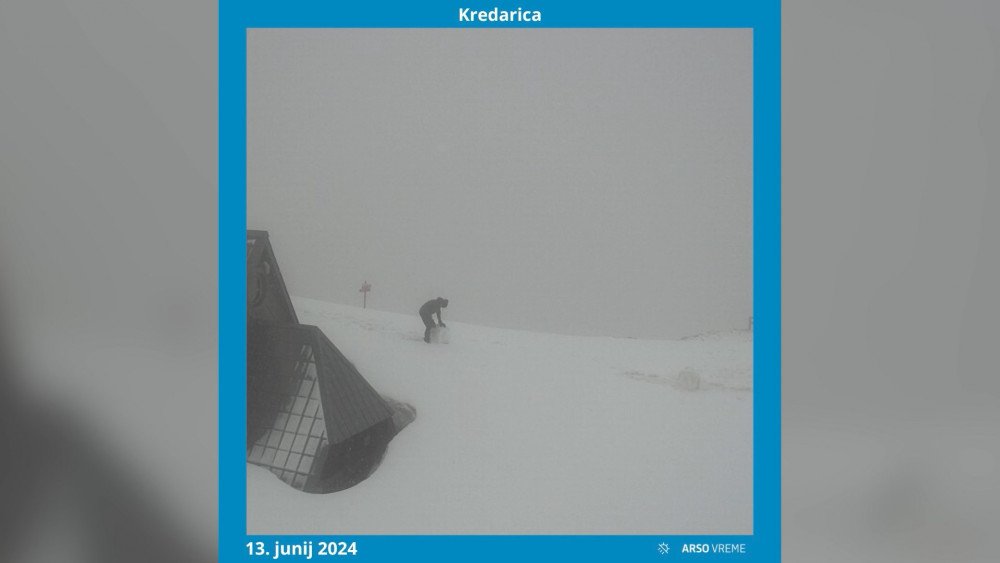
June snow on Mount Kredarica in Slovenia
Russia
On June 15, a powerful storm hit the coastal areas of Krasnodarskiy Krai in Russia.
In the city of Anapa, streets and sidewalks were quickly flooded. The storm drainage system started to operate in reverse. A large waterspout formed near the village of Maly Utrish.

Large waterspout near the village of Maly Utrish, Krasnodarskiy Krai, Russia
In the city of Novorossiysk, heavy rain mixed with large hailstones measuring 5-6 cm in diameter turned streets into rivers. Public transport came to a halt. Waterspouts formed in the bay.
In the village of Raevskaya, lightning struck a substation, leaving the entire rural area without electricity.
Asia
Russia
In the Asian part of the country, in Yakutia, a true natural anomaly occurred.
Bank on June 12, temperature in the village of Saskylakh rose to +26.3°C, which is
11°C above the norm.
Yet, on June 15, the temperature dropped to -0.3°C, and over 10 cm of snow fell.

In the village of Saskylakh in mid-June, 10 cm of snow fell, Yakutia, Russia
This natural phenomenon bewildered local residents.
China
On June 13, northeastern China was hit by a series of powerful storms. In the city of Harbin and the provinces of Heilongjiang and Hebei, extreme weather conditions with thunderstorms and powerful winds were observed. Among the most dangerous phenomena recorded, there were at least three tornadoes.
One of them swept over power lines in Harbin, causing wires to break and start burning.
In Daming County, Hebei Province, the wind force reached level 14. It is worth noting that China uses an extended Beaufort scale to assess wind force, which includes 17 levels. Level 14 wind speeds range from 41.4 to 46.1 m/s, which corresponds to the power of a Category 1 tropical hurricane.
Gusts of wind uprooted many trees, caused damage to buildings, and disrupted water and electricity supplies.
Fujian, Guangxi, Jiangxi, and Guangdong provinces were hit by deadly floods.
At least 1,182,500 people were affected.

Massive flood in Guangdong Province, China
As of June 19, at least 13 people were confirmed dead and 23 were reported missing.
In Shanghang County, Fujian Province, 233.9 mm of rain fell on June 16, exceeding the historical maximum daily rainfall. Numerous landslides occurred; bridges and dams were destroyed in the province.
Over the week, the total rainfall in the province reached 940 mm. Longyan County was hit the hardest, with an astonishing 411 mm of rain falling within just 12 hours.
In Guangdong Province, water levels in at least
17 rivers exceeded critical marks.
The rushing water destroyed bridges and hundreds of buildings.
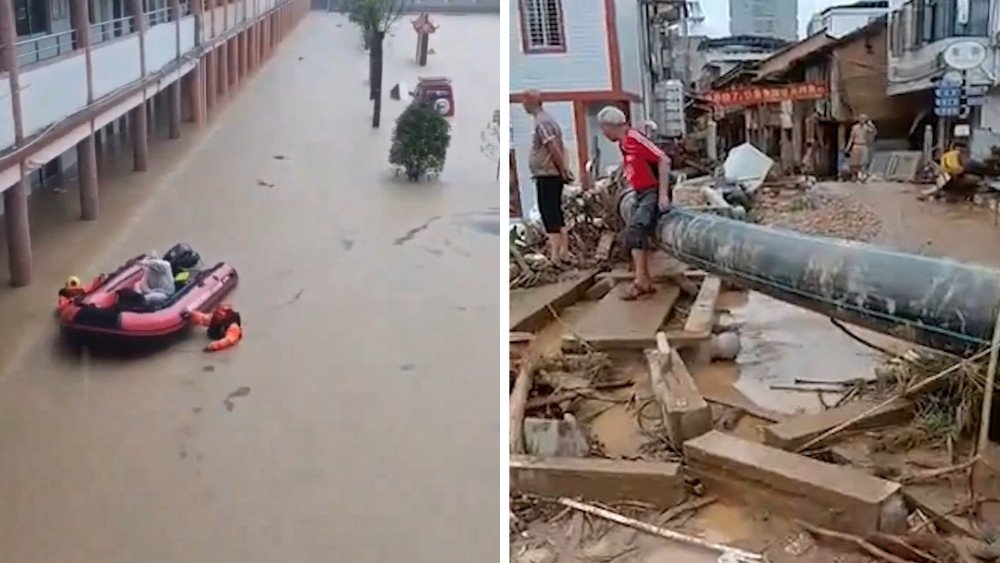
Aftermath of abnormal heavy rains, Guangdong Province, China
In Meizhou County, more than 9,000 people were involved in rescue operations.
Saudi Arabia
In Mecca, Saudi Arabia, for several days the air temperature rarely dropped below +40°C, even at night. On June 17, the temperature soared to +51.8°C.
Extreme heat coincided with the Hajj — the annual Muslim pilgrimage to Mecca, which took place from June 14 to 19 this year. People fainted in the streets due to the unbearable heat. On just one day, June 16, over 2,700 pilgrims suffered heatstroke and were taken to local hospitals.
According to eyewitnesses,
motionless bodies lay on the roadsides.
People were walking so close to each other that they passed by those who had fallen to the ground, having no way to help anyone. Ambulances couldn’t cope with a huge number of calls. An Egyptian pilgrim described the situation as looking “like the end of the world.”

Extreme heat in Mecca, Saudi Arabia
As of June 21, according to the French news agency Agence France-Presse (AFP), which also communicated official statements and reports from diplomats, the death toll reached 1,126 people. More than half of them were Egyptian citizens. Deaths during the pilgrimage were also confirmed by diplomats from Indonesia, India, Malaysia, Jordan, Iran, Senegal, Tunisia, and several other countries.
Hundreds of people lined up at the emergency complex in the Al-Muaisem district of Mecca to retrieve the bodies of their loved ones and find information about missing family members.
Most of the deceased were unregistered pilgrims who joined the Hajj without official permission. As a result, they didn’t have access to water, air-conditioned tents, and buses. Those people had to stay in the streets, exposed to extreme heat.
North America
USA
On June 12, a tropical depression brought abnormally heavy rains to South Florida in the USA.
In some areas, more than 630 mm of precipitation was recorded. Roads were flooded, and traffic was closed on the main Interstate 95. Railway service was also disrupted, and hundreds of flights were canceled at 3 international airports: Miami, Palm Beach, and Fort Lauderdale.
The US National Weather Service issued
a rare emergency due to “life-threatening flood”.
The last time such a thing happened was in April 2023.
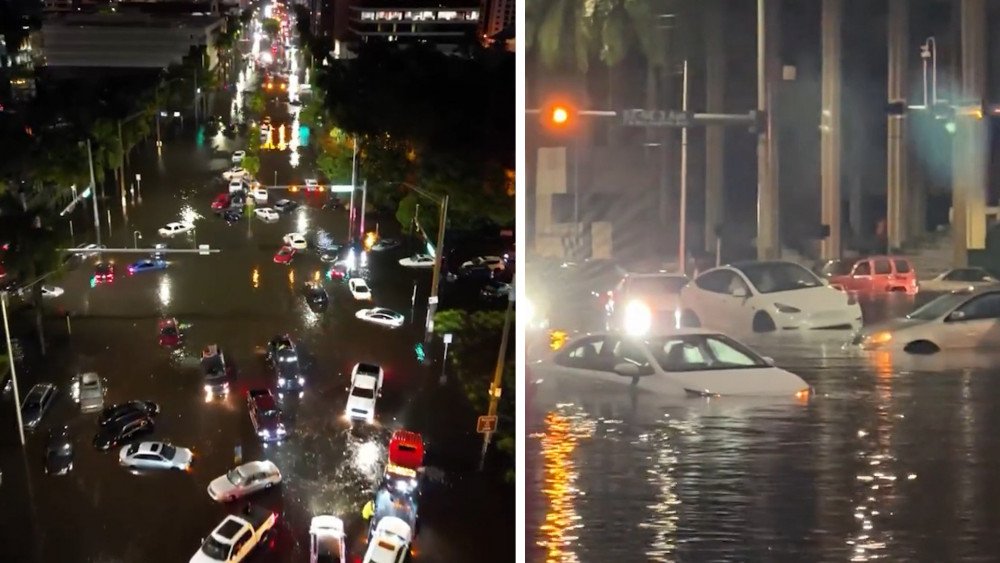
“Flood of the century” in April 2023, Florida, USA
Back then, the flood was called the storm of the century for the state, and its recurrence just a year later left local residents in despair.
On June 15, a wildfire broke out near Los Angeles. Due to windy weather and low humidity, the flames spread rapidly, covering more than 6,000 hectares in both Los Angeles County and neighboring Ventura. The fire spread through Hungry Valley State Park and moved southeast towards Pyramid Lake. The fire approached residential and tourist areas and resulted in evacuation of 1,200 people.
According to the California Department of Forestry and Fire Protection (Cal Fire), as of June 17, only 2% of the fire's area had been brought under control.
Two large fires broke out on June 17 in southeastern New Mexico. The fire behavior was extreme.
The flames reached a height of 30 meters,
and strong winds prevented their containment.
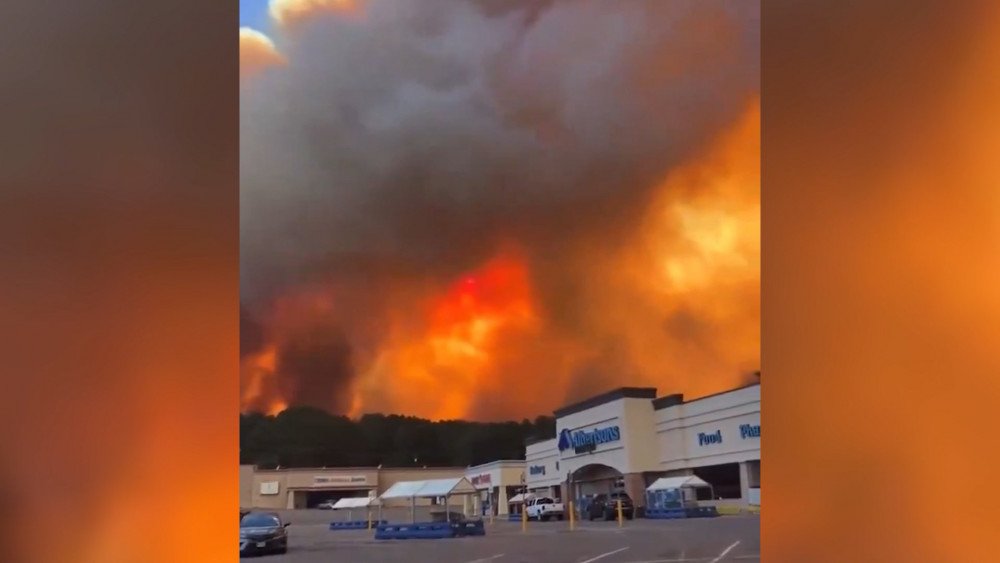
Flames of the wildfire reached a height of 30 meters, New Mexico, USA
The South Fork Fire was detected around 9 a.m., and the Salt Fire around 2 p.m. They broke out in the Mescalero Apache Reservation area, threatening the residents of Ruidoso, Ruidoso Downs, and nearby areas.
Within an hour, the police department and fire department barricaded all roads to the affected settlements except one designated for emergency evacuation.
Residents were told: “LEAVE NOW: do not try to gather belongings or protect your homes. Evacuate immediately.”
A resident of Ruidoso said that the evacuation order on Monday came so quickly that she and her husband only had time to grab their two children and two dogs. “It felt like the sky was on fire. It was bright orange,” she said. “Honestly, it felt like the apocalypse. It was terrible, and sparks were falling on us.”
Another local resident reported being “scared to death” after being engulfed in smoke.
“In our 19 years there, we have experienced several fires, and
none of them was as brutal as this one.”
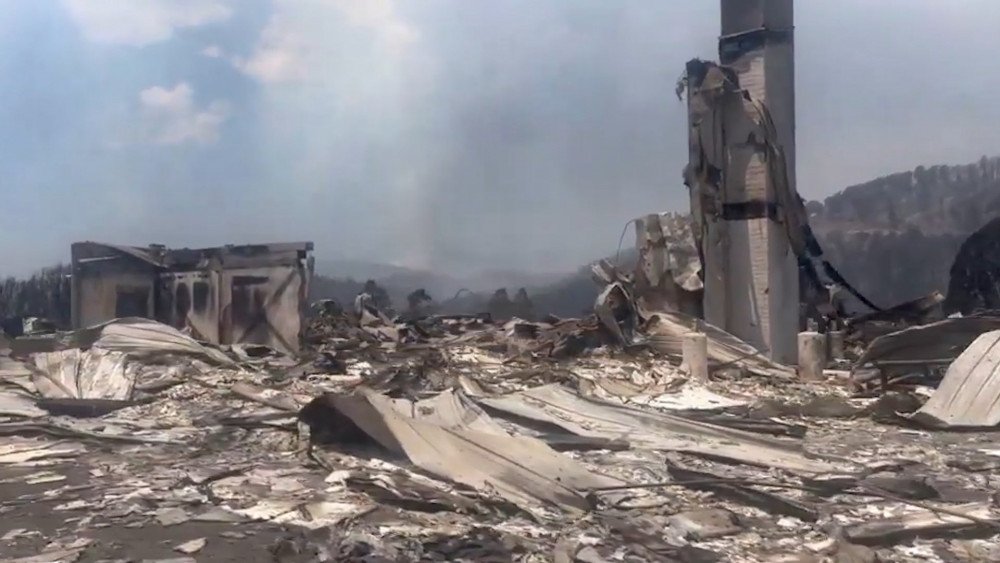
Ruins after a wildfire, New Mexico, USA
As of June 19, at least two people died from the fire. More than 8,000 local residents urgently left their homes. Over 1,400 buildings were damaged or ruined.
100% of the fire remained uncontrolled by firefighters.
Africa
Côte d'Ivoire
On June 13-14, heavy rains hit the city of Abidjan and its suburbs in Côte d'Ivoire. In some places, up to 214 mm of precipitation fell in just 24 hours, which exceeds the norm four times (the norm of precipitation for 24 hours is 50 mm).
Several neighborhoods in the city were flooded, forcing residents to seek shelter on rooftops and wait for help for hours. Firefighters and rescuers used boats and special equipment to navigate the rushing waters and evacuate people from flooded areas.
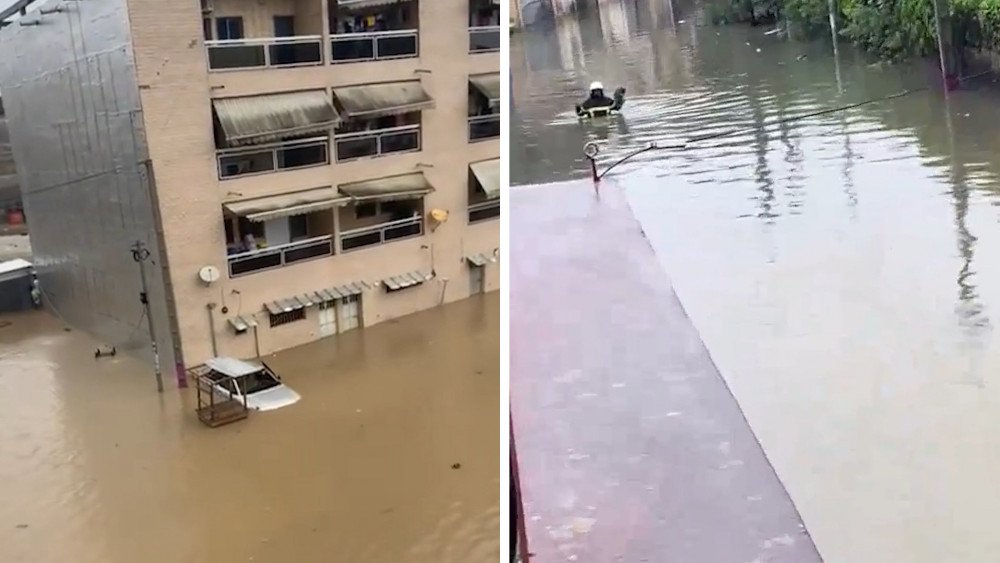
Flooded homes and streets in Abidjan, Côte d'Ivoire
In Bingerville, landslides destroyed homes, and rescuers risked their lives to pull victims from under the rubble.
At least 8 people died, and 18 were injured and taken to the hospital due to the floods and landslides.
South America
Ecuador
On June 16, residents of Ecuador found themselves at the epicenter of powerful storms. According to the latest report from the Secretariat for Risk Management, more than 1,200 people were affected. The disaster claimed the lives of at least 10 people, with 11 others reported missing. Dozens of people were injured.
Heavy rains affected more than half of the country's provinces (13). The most severe situation was in the provinces of Tungurahua and Chimborazo in the central Andean part of the country, as well as in Napo Province in the Amazon basin.
Downpours caused rivers to overflow all over the country. Flows of mud and flood waters hit roads and bridges, causing 20 highways across the country to be closed.
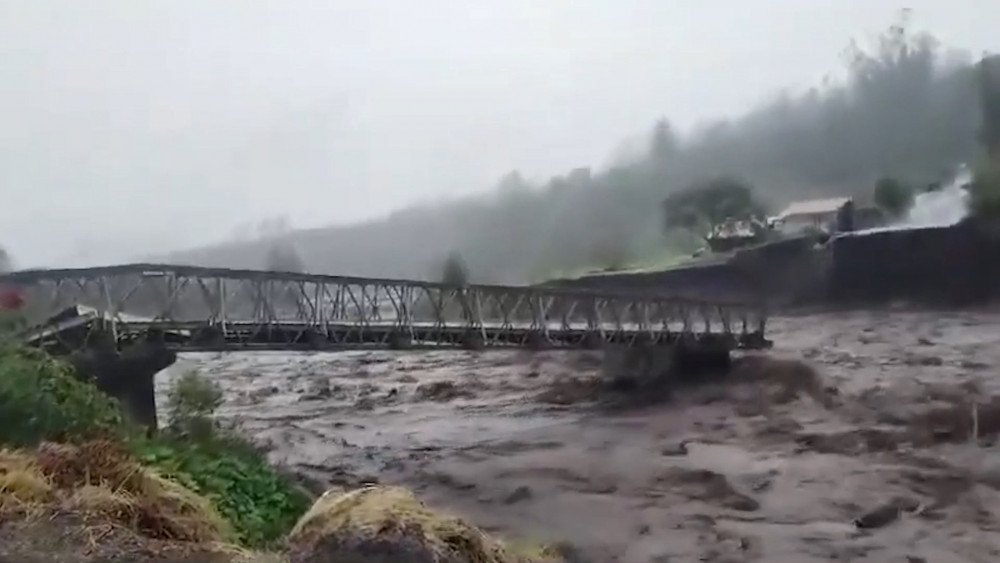
Bridge destroyed by water and mud flows after abnormal rains, Ecuador
The main Baños-Puyo highway, which links Ecuador's highlands to provinces in the Amazon region, has been hit by about 20 landslides that blocked traffic on it.
In the city of Baños, Tungurahua Province, people, houses, and cars were buried under a massive landslide.
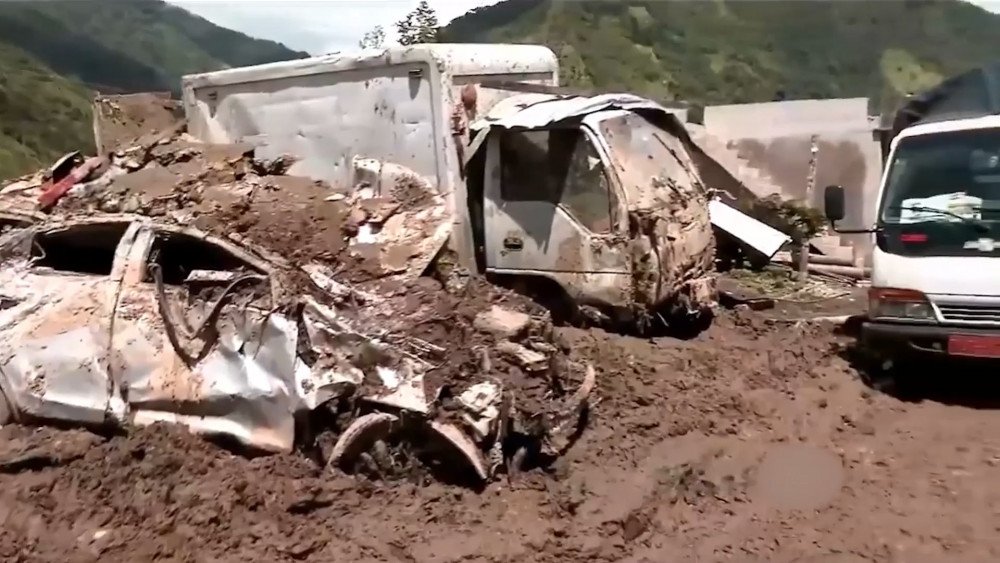
Damaged cars covered with mud from a landslide, Baños, Ecuador
Baños mayor, Miguel Guevara, declared a state of emergency, urging residents to stay home and avoid dangerous roads to facilitate the work of emergency services. Schools switched to online learning to ensure the safety of students and staff.
The flood halted operation of the country's main hydroelectric power plant, Coca-Codo Sinclair. The Agoyan power plant was also flooded and rendered inoperative.
It’s important to note that this disaster occurred just a few months after a severe drought in Ecuador. This exacerbated the severe aftermaths of the powerful flood.
Chile
For several days, from June 10 to 17, abnormal rains, strong winds, and thunderstorms were ravaging central and southern Chile.
Seven of the country's 16 regions were declared disaster zones.
One person died, three people were injured, and more than 11,000 were affected by the extreme weather.

Evacuation of residents from regions declared disaster zones due to flooding, Chile
The most critical situation was in the Bio Bio region inhabited by more than 1.5 million people.
In the city of Curanilahue, about 350 mm of rain fell in just a few hours, which exceeds the region’s total rainfall for the entire last year. As a result, the Curanilahue and Ranas rivers overflowed and flooded most of the city. Around 7,000 people were forced to leave their homes and move to safer areas.
On June 18,
an extremely rare phenomenon formed: a tornado struck the Bío Bío area,
destroying at least 11 houses and downing trees and utility poles.
According to the National Disaster Prevention and Response Service (Senapred), the tornado was classified as EF-0 with recorded
wind speeds of up to 137 km/h.

Aftermath of a rare tornado in the Bio Bio region, Chile
On June 12, the Chilean Meteorological Office issued the highest level of warning due to heavy rains and winds, affecting 14 of the country's 20 million residents. In the capital city of Santiago, such a level of alert was issued for the first time in 20 years.
The next day, rains overwhelmed the capital, causing flooding, power outages, and transportation problems. According to official data, this June became the wettest June in Santiago over the last 42 years, since 1982. This is notable, considering that the central part of Chile has been suffering from a severe drought for 15 years.
As a result of the disaster, more than 100,000 households were left without electricity, and nearly 9,000 homes were damaged.
A few days earlier, on June 9, in the city of Viña del Mar, residents of a luxury 12-storey building were urgently evacuated after
a giant sinkhole, measuring 15 meters wide and 30 meters deep, formed under it due to the rains.

Giant sinkhole under a luxury building in Viña del Mar, Chile
Climate chaos on the planet is increasing, disrupting our habitual way of life. More and more regions becomу uninhabitable. Traditional vacation spots are turning into risk zones, and a long-awaited holiday can turn into a nightmare.
However, many people do not want to notice that. They continue to live as before, endangering not only themselves, but all of humanity. Everyone needs to know what is happening to our planet. Indifference, silence, and inaction will lead to catastrophic consequences. The issue of increasing disasters must become the most topical in the world. It should be discussed on all possible platforms so that politicians and scientists start acting and find a solution.
To learn more, we recommend watching the International Forum “Global Crisis. The Responsibility.” The future of humanity depends on each of us!
The video version of this article can be viewed here.
Leave a comment